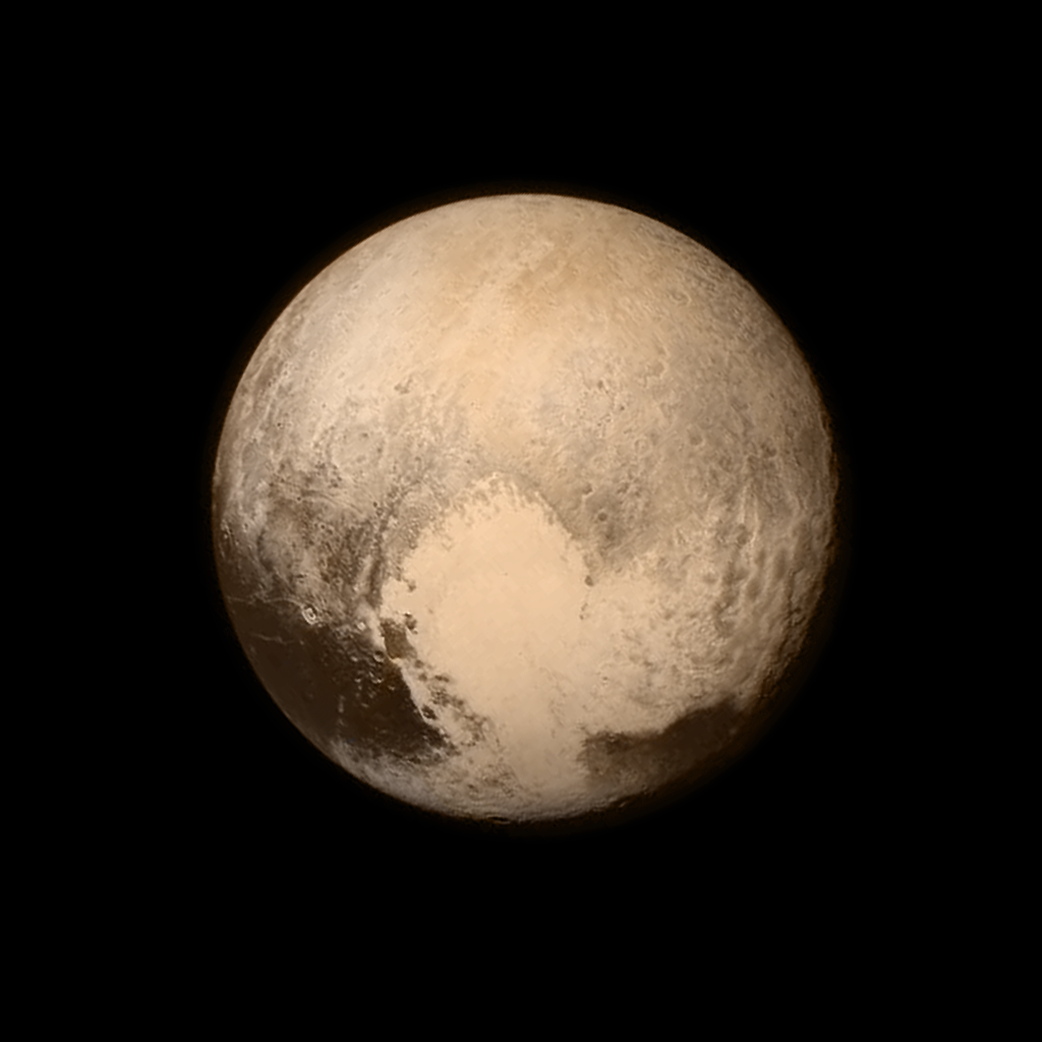This Amazing Photo of Pluto Is Just the Beginning, NASA Says

The veil has been pulled back from the surface of Pluto: a jaw dropping new photo of the dwarf planet taken by NASA's New Horizons probe reveals never-before-seen details, and it's only the beginning of more amazing photos to come.
The new image was the last snapshot taken before New Horizons went quiet in anticipation of its close flyby of Pluto, which was scheduled to take place early this morning (July 14). The photo shows two major features on Pluto's surface that have been coming into view over the last few weeks: a large, bright, heart-shaped feature and the head of a darker region that is unofficially being called "the whale" (lower left). The incredibly detailed snapshot also reveals other, previously unseen geologic features on the dwarf planet's surface.
The image was taken on Monday (July 13), when NASA's New Horizons spacecraft was only 476,000 miles (766,000 kilometers) from the surface of Pluto. You can see a video of the New Horizons science team discussing their first reactions to the new image here on Space.com. [New Horizons' Epic Pluto Flyby: Complete Coverage]
New Horizons' closest approach to Pluto was scheduled to take place at 7:49 a.m. EDT (1149 GMT) today (July 14), but the mission team won't know until this evening whether or not the probe reached its target. Contact with the probe ended, as planned, at 11:17 p.m. EDT Monday night (July 13 —0317 GMT July 14). Mission representatives will hold a press conference tonight at 9 p.m. EDT (0100 GMT July 15) on NASA TV to report on the outcome of the probe's close approach. The spacecraft's "flyby sequence" of Pluto continues through Thursday.
The image was taken with the Long Range Reconnaissance Imager (LORRI) aboard New Horizons, and combined with lower-resolution color information from the Ralph instrument. Taken on Monday (July 13), the picture is "the last and most detailed image sent to Earth before the spacecraft's closest approach to Pluto on July 14," according to a statement from NASA. Pluto's "heart" feature measured approximately 1,000 miles (1,600 kilometers) across, and appears "remarkably featureless," the statement said, "possibly a sign of ongoing geologic processes."
This morning (July 14) at the Applied Physics Laboratory (APL) in Laurel, Maryland (mission headquarters for New Horizons), mission team members, guests, members of the press and the general public counted down to the exact moment of the probe's closest approach. The crowds of people erupted in cheers and applause, and waved American flags, when the moment finally arrived.
"I haven't had very much sleep," said Alice Bowman, New Horizons' mission operations manager, at a press conference following the celebration. "But I have absolute confidence that [New Horizons] is going to turn around and send us that burst of data and tell us that it's OK. So I guess it's a mix of feeling nervous and proud at the same time."
Get the Space.com Newsletter
Breaking space news, the latest updates on rocket launches, skywatching events and more!
Follow Calla Cofield @callacofield. Follow us @Spacedotcom, Facebook and Google+. Original article on Space.com.
Join our Space Forums to keep talking space on the latest missions, night sky and more! And if you have a news tip, correction or comment, let us know at: community@space.com.

Calla Cofield joined Space.com's crew in October 2014. She enjoys writing about black holes, exploding stars, ripples in space-time, science in comic books, and all the mysteries of the cosmos. Prior to joining Space.com Calla worked as a freelance writer, with her work appearing in APS News, Symmetry magazine, Scientific American, Nature News, Physics World, and others. From 2010 to 2014 she was a producer for The Physics Central Podcast. Previously, Calla worked at the American Museum of Natural History in New York City (hands down the best office building ever) and SLAC National Accelerator Laboratory in California. Calla studied physics at the University of Massachusetts, Amherst and is originally from Sandy, Utah. In 2018, Calla left Space.com to join NASA's Jet Propulsion Laboratory media team where she oversees astronomy, physics, exoplanets and the Cold Atom Lab mission. She has been underground at three of the largest particle accelerators in the world and would really like to know what the heck dark matter is. Contact Calla via: E-Mail – Twitter









